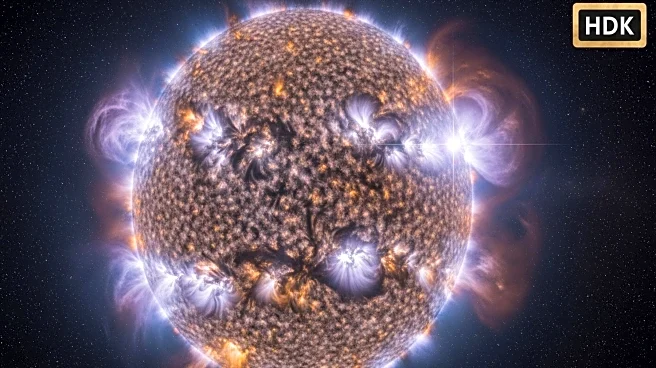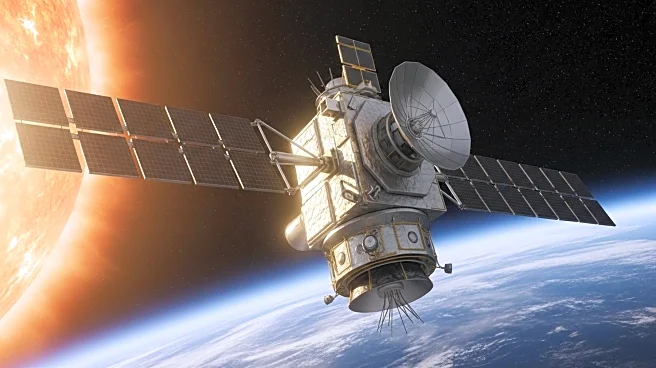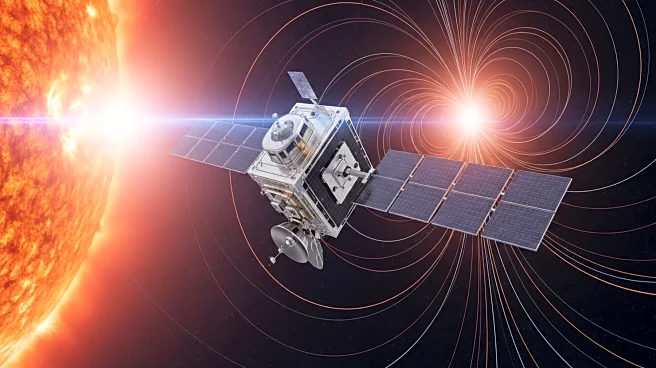What's Happening?
The Daniel K. Inouye Solar Telescope in Hawaii has captured the clearest images to date of a solar flare, providing unprecedented detail of the sun's coronal loops. These images, taken during an X-class flare in August 2024, reveal arcs of hot gas as narrow as 10 to 30 miles wide, which are believed to be the fundamental building blocks of solar flares. This level of detail is over 2.5 times sharper than previous observations, which could only resolve loops 60 to 100 miles wide. The telescope, located atop the Haleakalā volcano, benefits from unique environmental conditions that enhance its ability to observe the sun's corona. The study, published in The Astrophysical Journal Letters, involved measuring 686 loops, which were found to be similar in thickness, suggesting the telescope's capability to observe the smallest components of solar flares.
Why It's Important?
This breakthrough in solar observation is significant for improving space weather forecasting. Understanding the fundamental components of solar flares can lead to better predictions of solar storms, which have the potential to disrupt satellites, power grids, and radio communications on Earth. As the sun undergoes its 11-year cycle of activity, with the most recent peak occurring in October 2024, the ability to predict and prepare for solar flares becomes increasingly crucial. The data from these observations could enhance computer models used to forecast space weather, potentially mitigating the impact of solar storms on critical technology and infrastructure.
What's Next?
Future research will likely focus on analyzing the detailed data collected by the Daniel K. Inouye Solar Telescope to refine models of solar flare formation and behavior. This could involve further studies to confirm the existence of these fundamental loops and their role in solar flares. As solar activity continues to fluctuate, ongoing observations will be essential to improve the accuracy of space weather predictions. Stakeholders in telecommunications, navigation, and power industries may need to consider these advancements in their contingency planning to protect against potential disruptions caused by solar storms.












